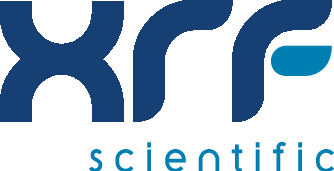Using TGA Instruments for LOI in Solid Combustion Residues
Thermogravimetric analysis (TGA) has become essential for determining the loss on ignition (LOI) in solid combustion residues such as coal ash, biomass ash, and cement residues. LOI is a critical parameter in assessing the quality and usability of these residues, referring to the mass loss when the sample is heated in an air or oxygen atmosphere to high temperatures, typically around 750°C or 950°C.
This post explores the principles, methodologies, and advantages of using TGA for LOI determination.
Principles of Thermogravimetric Analysis for LOI
Thermogravimetric analysis involves continuously measuring the mass of a sample as it is heated under controlled conditions. To remove moisture, the process begins by heating the sample in an inert atmosphere, such as nitrogen (N₂). This is followed by switching to an oxidizing atmosphere, such as oxygen (O₂), and further heating to the target temperature (750°C or 950°C). The mass loss during this phase indicates the LOI value, which results from the combustion of unburned carbon and the decomposition of minerals.
TGA Instruments and Their Operation
Modern TGA instruments facilitate the automated analysis of multiple samples simultaneously. This automation reduces human error and significantly improves throughput compared to traditional manual methods. These instruments control the atmosphere and temperature precisely, ensuring consistent and reproducible results.
The typical procedure for determining LOI using TGA involves:
- Initial Heating in Inert Atmosphere: The sample is heated in an inert atmosphere (e.g., N₂) to eliminate moisture content.
- Transition to Oxidizing Atmosphere: The atmosphere is switched to an oxidizing environment (e.g., O₂) to initiate combustion of residual carbon and decomposition of minerals.
- Heating to Target Temperature: Depending on the analysis’s specific requirements, the sample is heated to either 750°C or 950°C.
- Measurement of Mass Loss: The mass loss observed during the heating process is recorded, corresponding to the LOI value.
Advantages of TGA for LOI Determination
TGA offers several advantages over traditional LOI methods, making it a preferred choice in many industries:
- Accuracy: TGA provides more accurate LOI values by accounting for the dehydration of minerals and the decomposition of carbonates. Traditional methods may overlook these factors, leading to less precise measurements.
- Efficiency: Automated TGA instruments can analyze multiple samples simultaneously, significantly reducing the time and labor required for LOI determination.
- Detailed Analysis: TGA allows for the differentiation between various components contributing to mass loss, such as organic carbon, elemental carbon, and mineral decomposition.
- Precision: The controlled environment and precise temperature regulation in TGA minimize errors associated with manual methods, ensuring high reproducibility of results.
Challenges and Considerations
While TGA provides enhanced accuracy and efficiency, it is essential to recognize that mass loss in TGA cannot be solely attributed to carbon oxidation. For example, the dehydration of portlandite (Ca(OH)₂) also contributes to weight loss in the same temperature range (250-500°C). Therefore, interpreting TGA results requires careful consideration of all possible reactions occurring during the analysis.
Automated TGA instruments, such as the advanced XRTGA 1100 from XRF Scientific, offer a cutting-edge solution for determining loss on ignition in solid combustion residues. These instruments provide rapid, accurate, and efficient analyses, crucial for industries relying on precise material assessments. By delivering detailed insights into the composition and quality of materials like coal ash, biomass ash, and cement residues, the XRTGA 1100 supports a wide range of industrial processes and product improvements. With its high precision and reliability, the XRTGA 1100 stands out as an invaluable tool, reinforcing our commitment to enhancing material testing methodologies and driving innovation in the industry.




